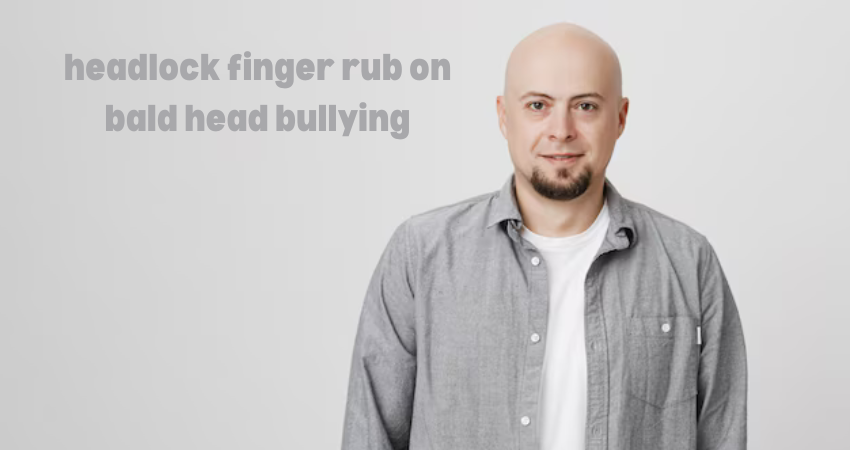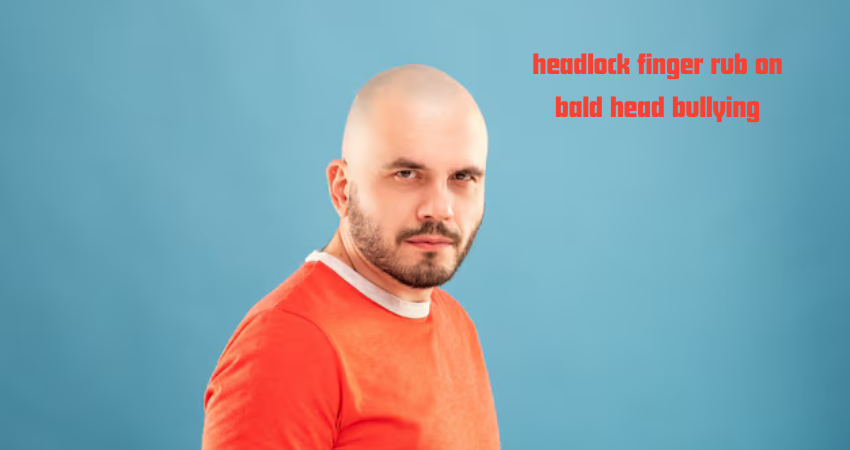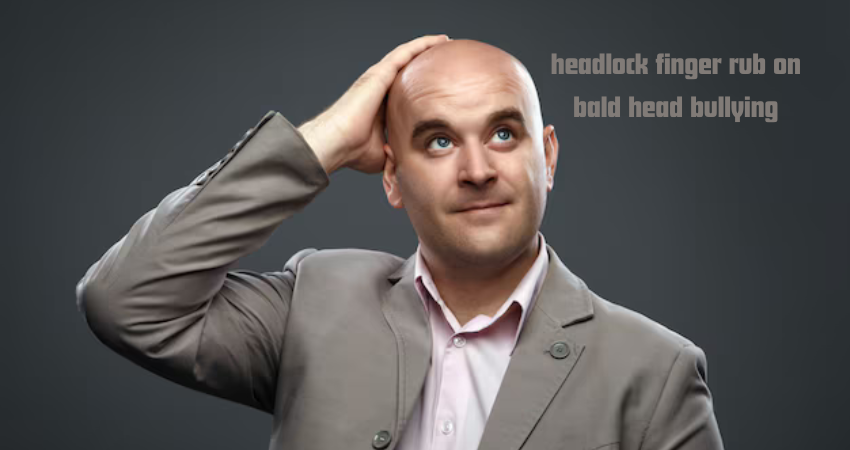The headlock finger rub on bald head bullying, a bullying act often portrayed as playful but sometimes deeply humiliating, involves trapping an individual in a headlock and vigorously rubbing their bald head. While some view this gesture as a light-hearted prank, others see it as a symbol of power imbalance and a breach of personal boundaries.
This article delves deep into the origins, cultural significance, and modern perspectives on this controversial act.
Historical Context of Baldness in Human Societies
Baldness in Ancient Cultures
Headlock finger rub on bald head bullying has carried various connotations throughout history. In Ancient Egypt, it symbolized cleanliness and wisdom, while in Greek and Roman societies, it was sometimes associated with aging and vulnerability. However, these interpretations were not universal.
Symbolism of Baldness in Religious and Social Hierarchies
Buddhist monks and Christian ascetics shaved their heads to signify humility and renunciation of materialism. However, in other contexts, baldness became a marker of ridicule or mockery, particularly in cultures that prized flowing hair as a sign of virility and beauty.

The Origins of the Headlock Gesture
Early Forms of Physical Gestures in Social Dynamics
Physical gestures have always played a significant role in human interaction. Anthropologists suggest that early humans used dominance-based physical interactions—such as playful wrestling or mock fights—to establish social hierarchies.
The Role of Playful Dominance in Childhood Behavior
Among children, dominance games often manifest as teasing or harmless physical gestures. However, these actions can sometimes blur the line between fun and bullying, depending on the intent and reception.
When Did the Headlock Finger Rub Begin?
Anecdotal Evidence from 20th-Century Schoolyards
The headlock finger rub likely emerged as a popular schoolyard prank in the mid-20th century. Anecdotal evidence suggests its rise coincided with cultural shifts that normalized physical humor as a form of camaraderie.
Role of Pop Culture in Popularizing the Gesture
TV shows, movies, and comics have long perpetuated slapstick humor. Characters in media often perform exaggerated physical acts of teasing, including the headlock, turning such behaviors into cultural norms.
Why the Bald Head? Psychological Underpinnings of the Act
Perceptions of Vulnerability in Baldness
A bald head is often seen as more “accessible” and visible, making it a natural target for physical gestures. This perception of openness can amplify feelings of vulnerability in the person being teased.
Power Dynamics and Physical Intimidation
The act of placing someone in a headlock is inherently dominating. Combining this with the symbolic act of rubbing a bald head creates a stark power imbalance.
Evolution of Bullying Tactics: The Shift Toward Playful Aggression
How Pranks Became a Common Social Outlet
Pranks have historically served as a way to release tension and bond within groups. However, when pranks exploit physical or emotional vulnerabilities, they can become harmful.
When Humor Crosses the Line into Bullying
What one person views as harmless fun, another may see as an invasive and humiliating act. The headlock finger rub straddles this delicate boundary.
Social Acceptance and Reactions to the Headlock Finger Rub
Differing Reactions Based on Cultural and Personal Contexts
While some cultures value baldness as a symbol of wisdom or strength, others view it as a weakness. Individual reactions to teasing vary widely, influenced by personal insecurities and societal attitudes.
Perspectives of Bald Individuals on the Act
For some, the headlock finger rub may be an amusing gesture. For others, it highlights insecurities about baldness, making the experience uncomfortable or even traumatic.
The Role of Media in Perpetuating or Reducing Bullying
Television and Movies that Normalize the Gesture
Classic sitcoms and cartoons often portray physical pranks as endearing or humorous. However, these portrayals can trivialize the emotional impact of such acts.
Campaigns Against Bullying and Their Impacts
In recent years, anti-bullying campaigns have emphasized the need to respect personal boundaries and discourage physical pranks.
Psychological Impact on Victims
Emotional Consequences of Physical Teasing
Victims of bullying, including acts like the headlock finger rub, often experience shame, anger, and diminished self-esteem.
How Victims Have Reclaimed Baldness as a Strength
Movements celebrating baldness, such as the “Bald is Beautiful” campaign, have helped individuals embrace their appearance and reduce the sting of teasing.
The Headlock Finger Rub in the Context of Workplace Bullying
Professional Environments and Baldness-Related Teasing
While less common in professional settings, teasing related to baldness persists in subtle forms. Workplace cultures that tolerate such behavior risk alienating employees.
Case Studies of Legal and HR Interventions
Several lawsuits and HR interventions highlight the need for organizations to address baldness-related bullying proactively.
Modern-Day Responses to Baldness Bullying
Advocacy Groups and Awareness Campaigns
Groups like the National Bullying Prevention Center advocate for respect and understanding, helping individuals combat baldness-related teasing.
Strategies for Bystanders to Intervene
Bystanders play a crucial role in stopping bullying. Simple actions, such as calling out inappropriate behavior, can make a significant difference.
Is the Headlock Finger Rub Harmless Fun or Harmful?
Arguments Supporting It as Harmless Fun
Proponents argue that the gesture fosters camaraderie and rarely causes lasting harm when performed among friends.
Arguments Showing It Can Be Harmful
Critics counter that the act perpetuates harmful stereotypes and can exacerbate insecurities in bald individuals.

Conclusion
The headlock finger rub on bald head bullying remains a polarizing gesture, walking the line between humor and harm. Understanding its history and cultural significance can foster empathy and encourage respectful interactions.
Frequently Asked Questions
What Is the Origin of the Headlock Finger Rub?
The gesture likely originated in mid-20th-century schoolyards, evolving as a playful act of dominance.
Why Is Baldness Often Targeted in Teasing?
Baldness is highly visible and culturally associated with vulnerability, making it a common target.
How Should Someone Respond to the Headlock Finger Rub?
Politely but firmly set boundaries, or use humor to defuse the situation if appropriate.
Can the Gesture Be Interpreted Positively?
In close friendships, it might be seen as an affectionate prank, though this depends on the context.
What Are the Best Ways to Combat Baldness Bullying?
Raise awareness, support victims, and promote a culture of respect.
Is the Headlock Finger Rub Considered Workplace Harassment?
Yes, if it violates personal boundaries or creates a hostile environment.


